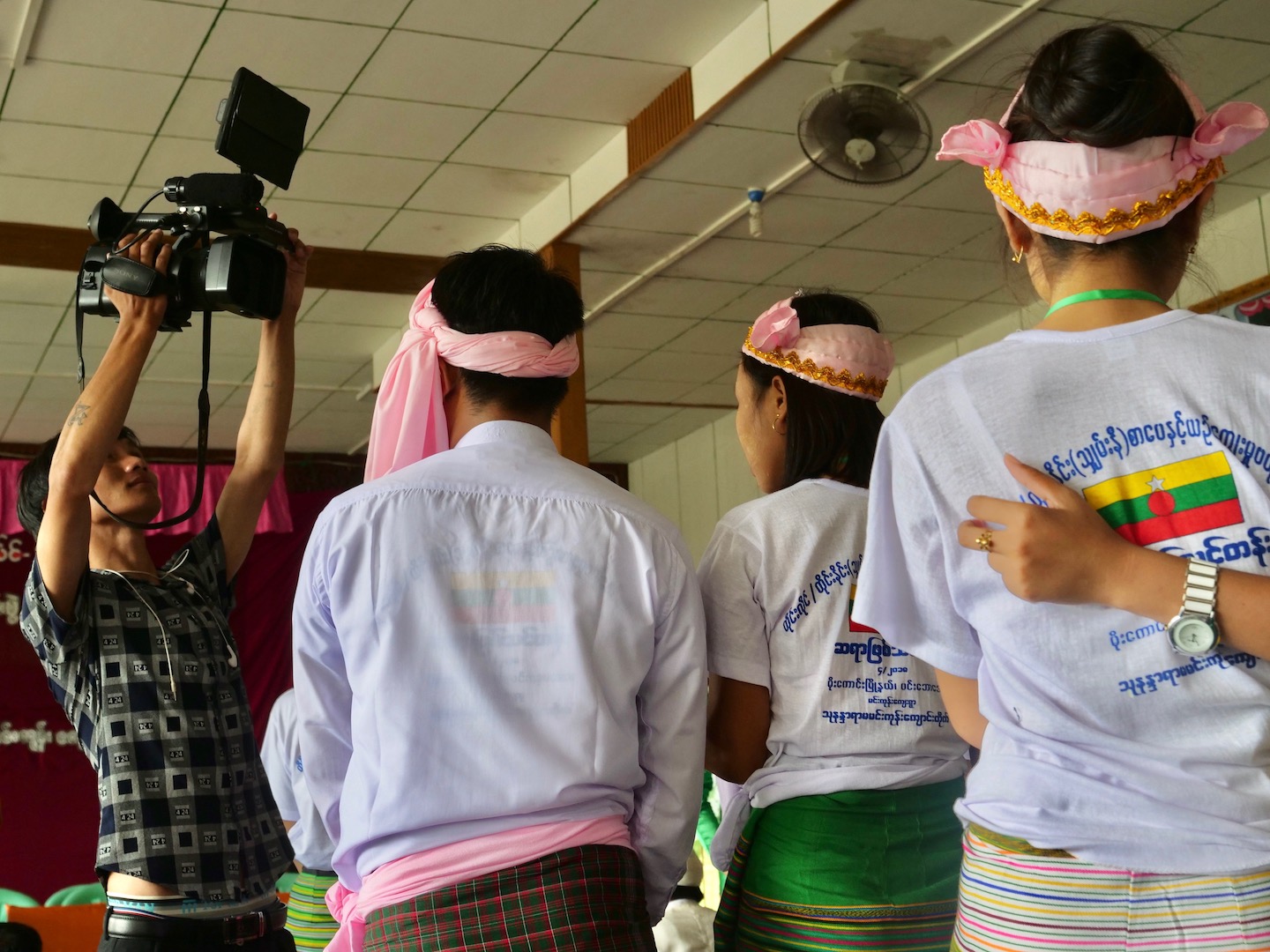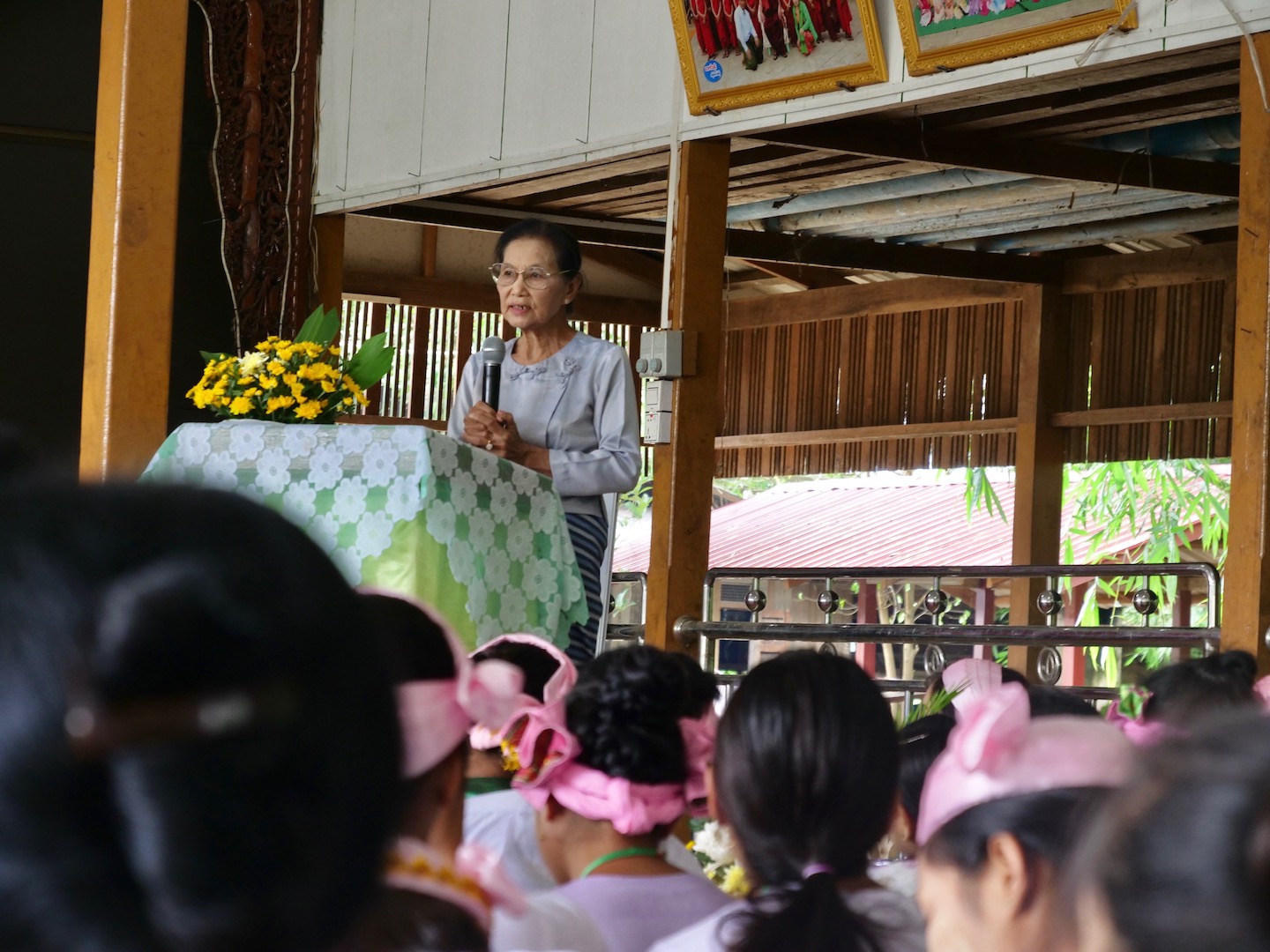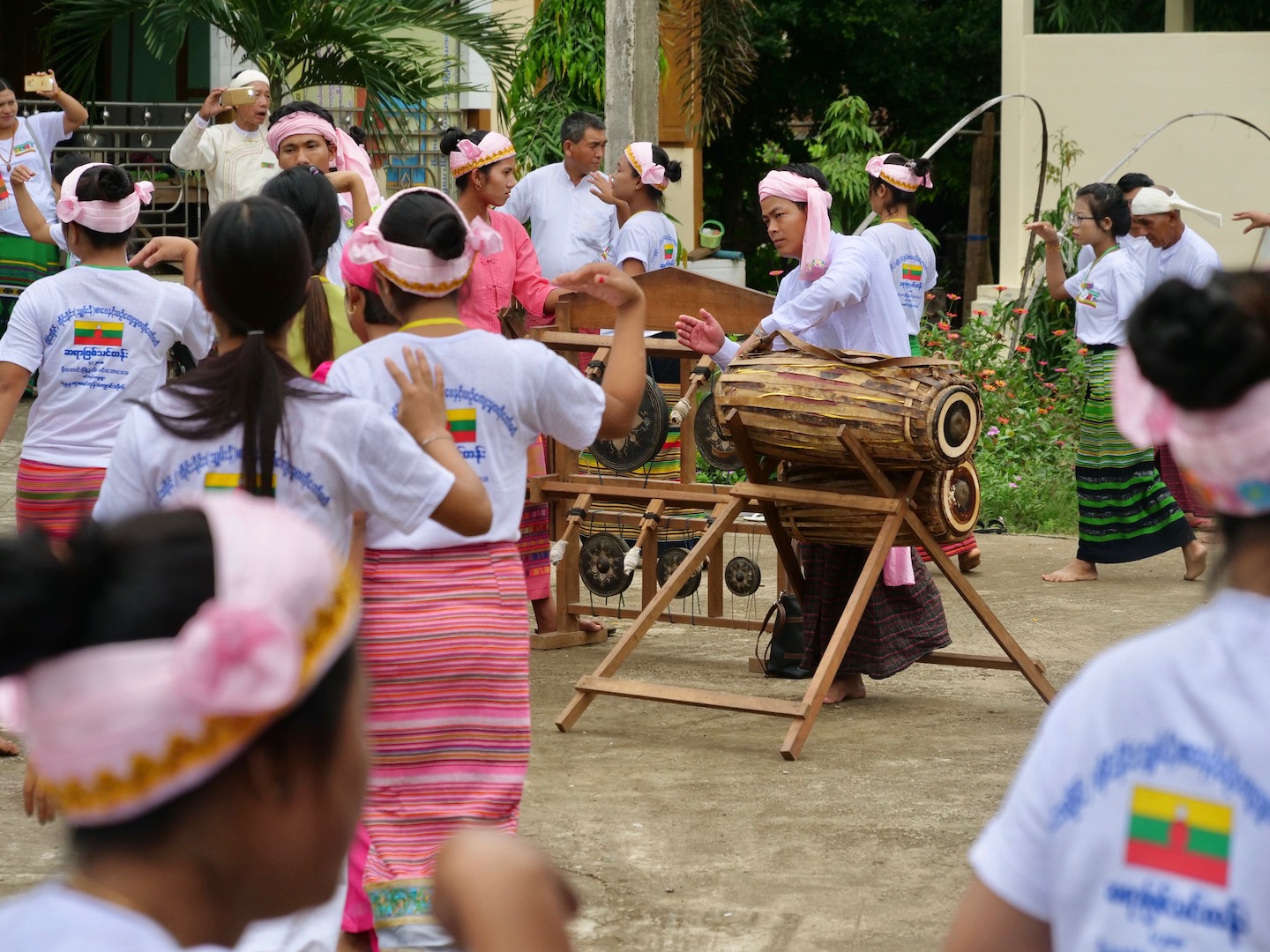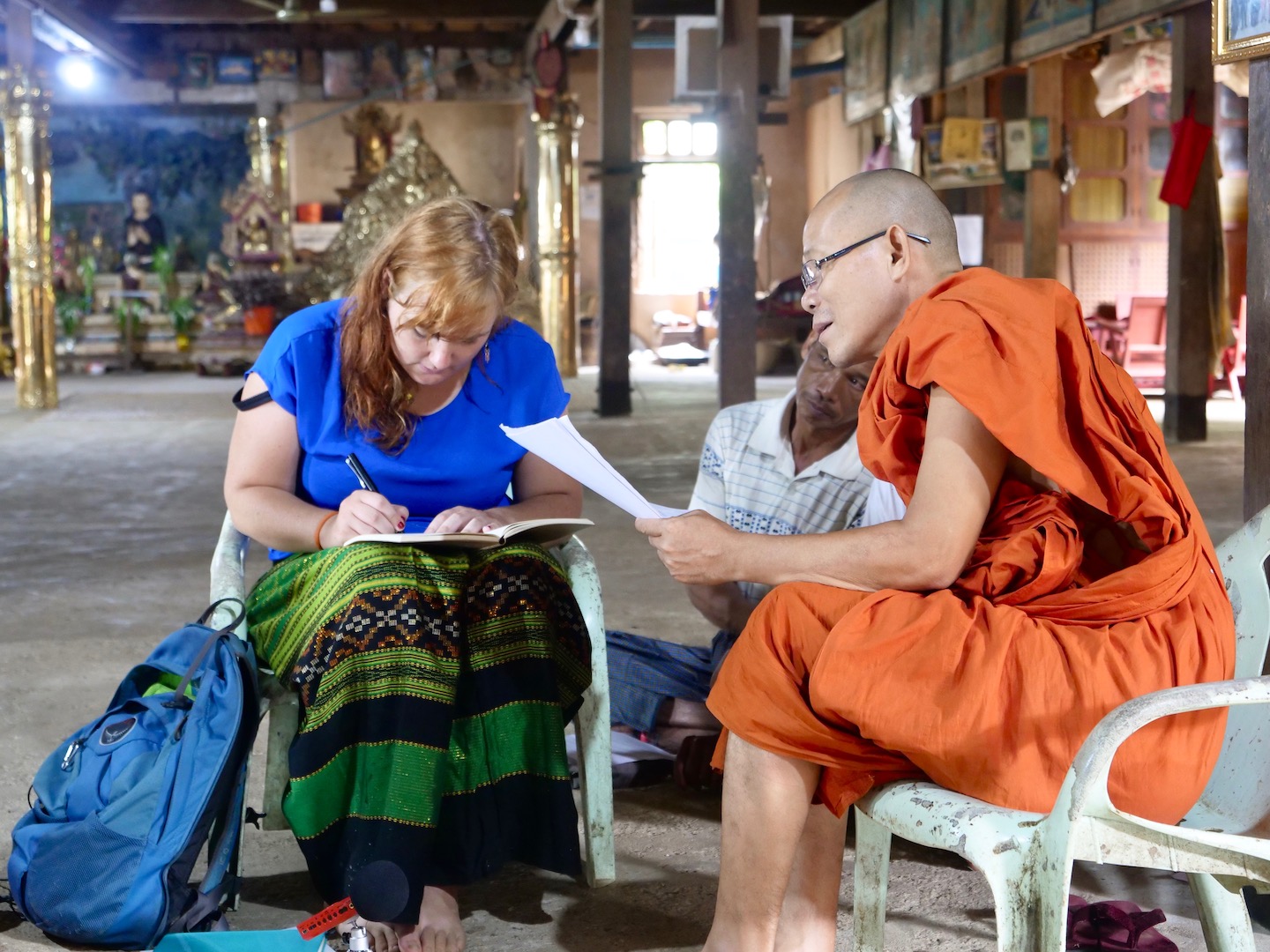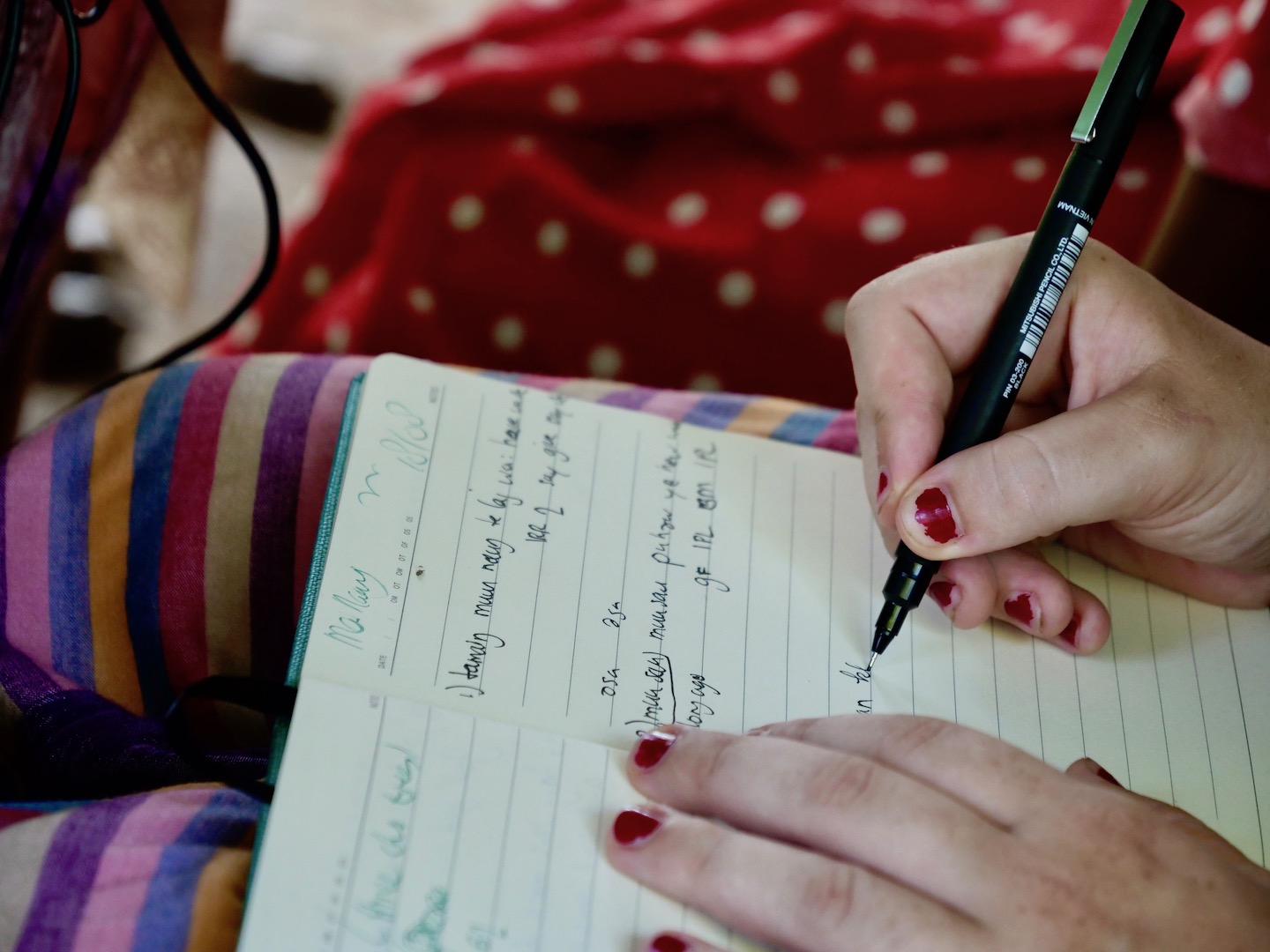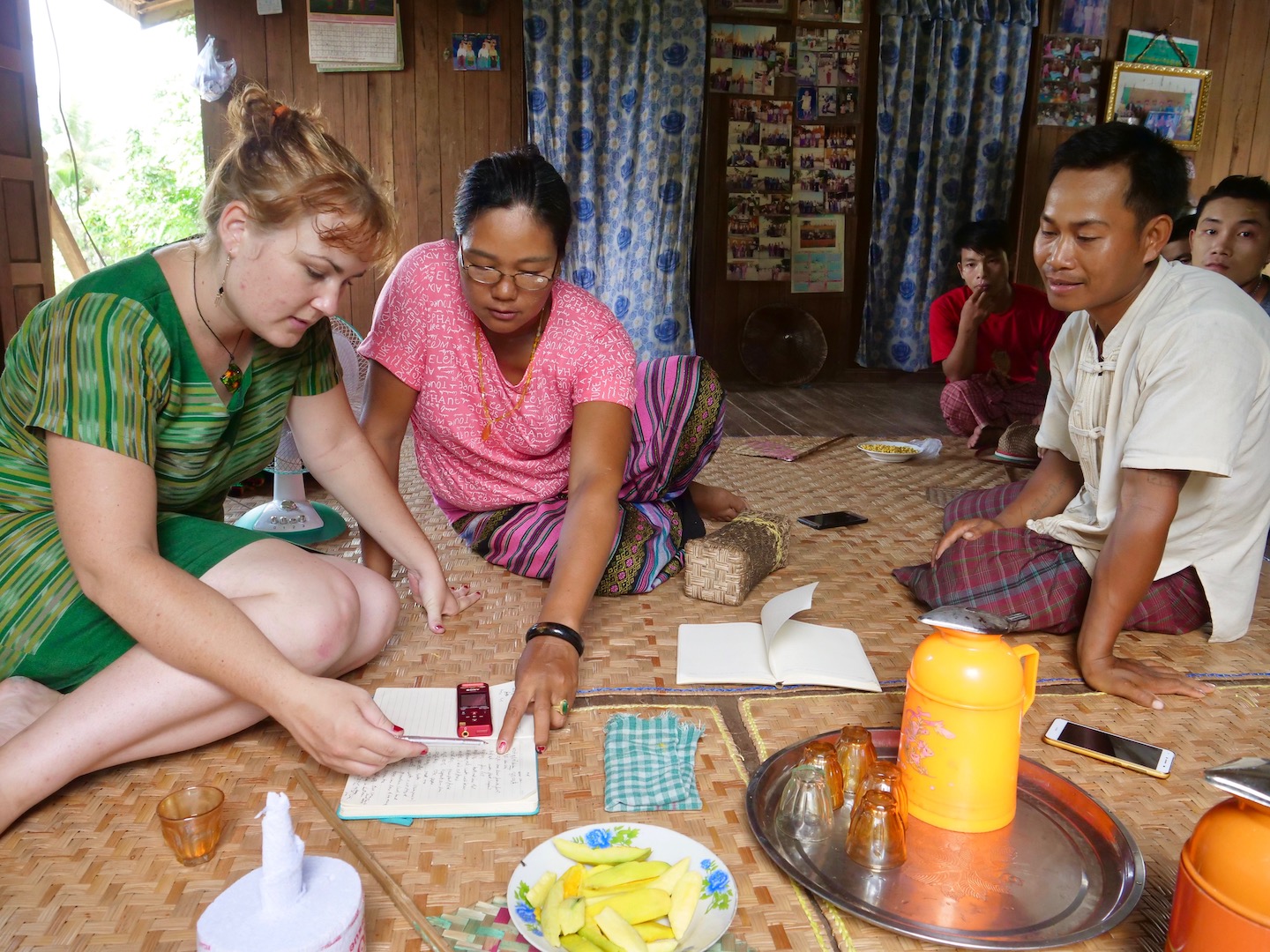Diving Deeper into Shan-ni Language
One of the focal points of our founding mission is the promotion of Shan-ni culture and language. This began over a year ago when we first established Face of Indawgyi and were having a discussion about creating plastic awareness signs with a local official. We thought it only appropriate to include these signs in not just Burmese and English, but the other local languages particularly Shan-ni and Kachin. The response we received to this was “No, just Burmese and English is fine.” To us, this response underscored the importance of more research and visibility into all cultures around the lake.
After fifty years, the Myanmar government finally dropped its prohibition on the teaching of ethnic minority languages in 2014. During this time, the punishment for speaking or possessing documents in any one of the varieties of languages spoken in Myanmar, aside from Burmese, ranged from fines to incarceration and, in some cases, even death. Fifty years is a long time and though it is now legal to teach local languages, the policy has effectively worked in many places not just in Kachin State, but all over Myanmar, to nearly wipe out non-Burmese languages from daily life.
Shan-ni People around Indawgyi
The Shan-ni people were particularly hard hit. Whereas Kachin people are predominantly Christian and had their own separate spaces for worship and a place to keep their language alive, the Shan-ni and Burmese share Buddhism as a faith. This was further exacerbated as the Myanmar government began increasing its military presence in its long war against the Kachin Independence Army (KIA).
Shan-ni people in these lowland areas were caught in between the two where they welcomed the military as protection from the KIA which often taxed villages or enforced conscription, but this came at the price of having increased scrutiny of their local cultural practices. Countless Shan-ni records were destroyed and the only safe places for language cultivation was through the monasteries that were overseen by Shan-ni monks.
Speaking in Shan-ni, the revered Pannya Vamsa introduces himself. Face of Indawgyi has been working with communities around Indawgyi to create the first video archive of the Shan-ni language.
The effects today are easily felt. Around Indawgyi, only a small handful of people can read or write Shan-ni. Generally, many older people can still speak the language and most middle-aged individuals have some level of comprehension and speaking. The youth has a very limited speaking and understanding of the language.
A Blossoming Language Renaissance
Things are not all bleak. On the other hand, Shan-ni is starting to blossom again thanks to the dedicated efforts of teachers, monks and other leaders. Since 2014, the language has begun to enjoy a renaissance with a proliferation of new teachers, schools and different forms of support. In the last year, the number of schools teaching Shan-ni has doubled. In Lon Ton Village, students are now taking the language beginning from grade 3.
Until now, Tai Laing (Shan-ni) dictionaries only existed in print. Carmen has worked with with experts to create the first ongoing Shan-ni/Burmese dictionary phone app to give all learners access to important educational tools.
As a part of these efforts, Face of Indawgyi hosted a linguist, Carmen Eva Marseilles, who conducted the first grammatical mapping of the language as part of her master’s thesis. Grammar is something we take for granted, but creating a cohesive map helps promote language acquisition and propagation. She is also working on a phone app dictionary to make learning the language easier for the nearly 300,000 speakers.
We also work in other ways to promote Shan-ni language through visibility and awareness. Using social media, we have been able to connect to a larger audience throughout Myanmar so that people from across the country can understand the importance of language and cultural preservation for all cultures, not just Shan-ni.
More than anything, we help to facilitate research. Ms. Marseilles spent five months working around Indawgyi and Kachin state to compile her research. We have also worked with journalists such as our friend Lorcan Lovett who recently published an article in Nikkei about Shan-ni Language. We are also creating a video archive of Shan-ni speakers consisting of everything from prayers and poems to histories of the villages and even funny anecdotes.
In collaboration with Lorcan Lovett, a Yangon-based writer, and Carmen Marseille, we were able to share the story of the Shan-ni people with a more global audience.
We are excited to keep working to learn more about the cultures around Indawgyi Lake and look forward to building more partnerships with organizations and individuals who share our vision. We are hoping these techniques we develop can be shared as a tool to help preserve other languages around Myanmar and beyond.

